Last updated: April 14, 2023
Article
Pillow Basalts
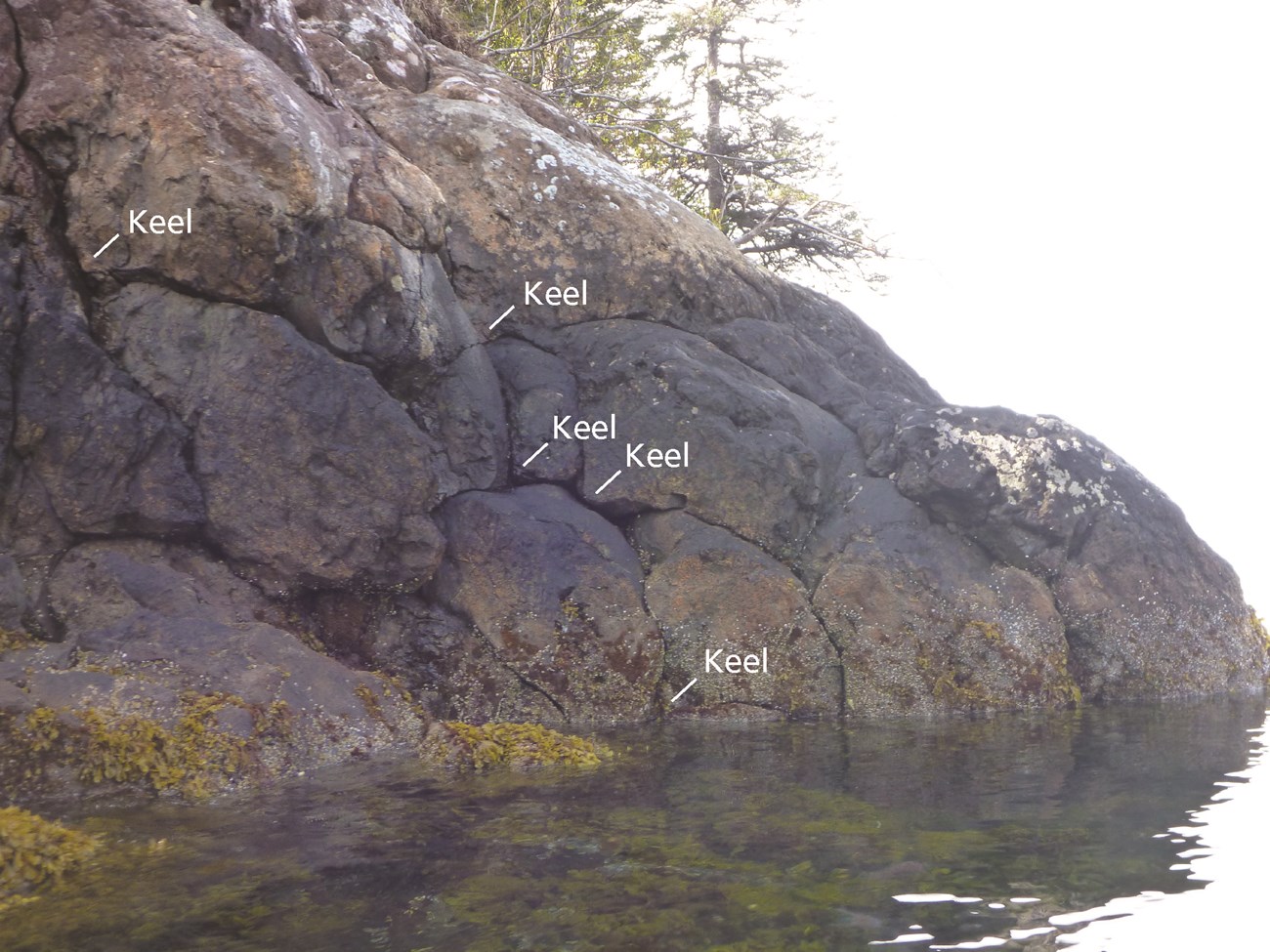
NPS photo by Chad Hults.
Introduction
Pillow lavas form during subaqueous eruptions. Since almost all pillow lavas are of basaltic compositions, they are most commonly called pillow basalts.
Most pillow basalts are formed on the ocean floor, but they may form in any subaqueous environment, including in lakes such as in the Hopi Buttes Volcanic Field near Petrified Forest National Park where many eruptions took place within a shallow lake. Pillow lavas also formed within the Aniakchak caldera in Aniakchak National Monument in Alaska when a lake filled the crater.
The initial submarine stage of shield volcano growth in the Hawaiian Islands includes eruptions of pillow lavas, like at Kamaʻehuakanaloa (recently renamed from Lōʻihi Seamount). Kamaʻehuakanaloa is about 22 miles (35 km) off the east coast of the island of Hawai’i and is the youngest volcano in the chain. Pillow basalts may be formed in other tectonic environments including at mid-oceanic ridges and in subduction zones.
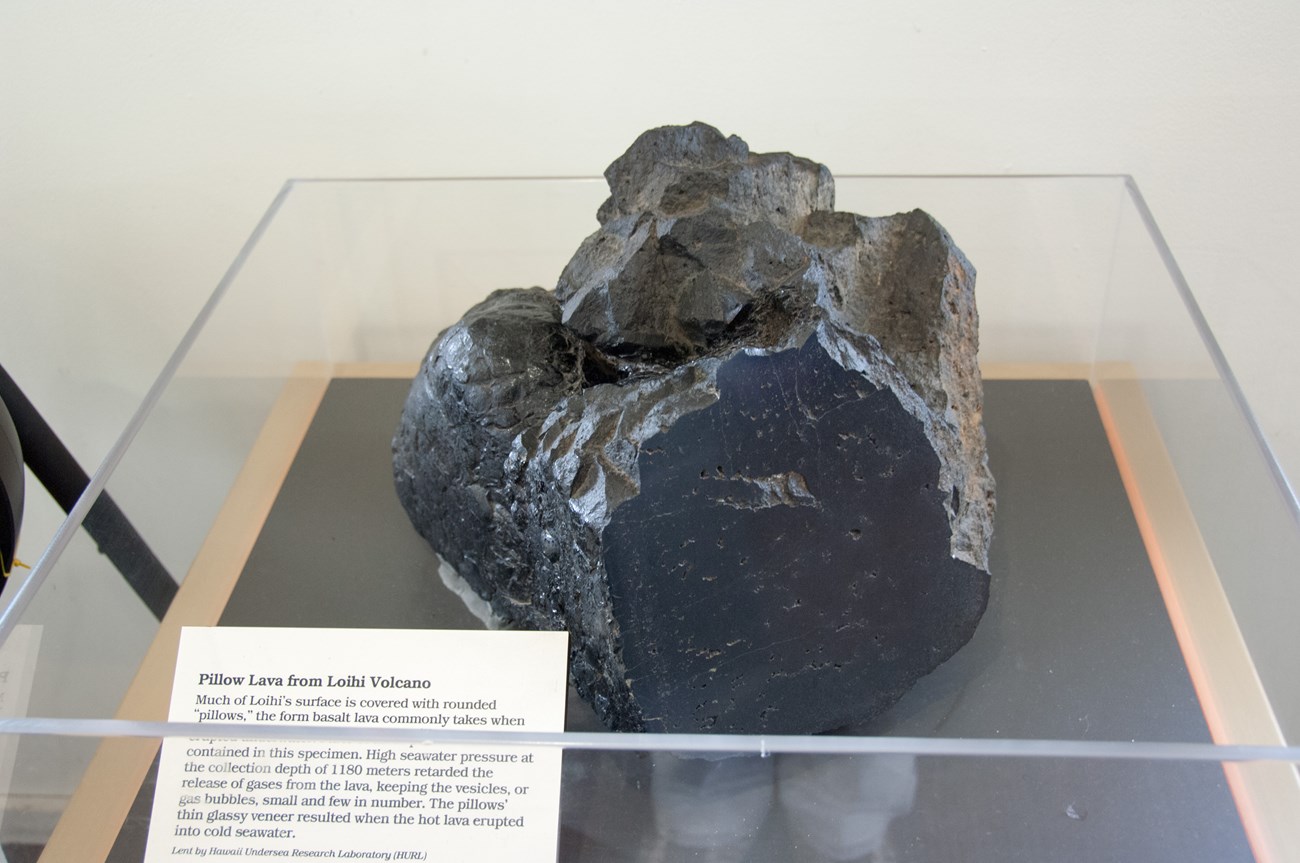
NPS Photo by Ed Shiinoki.
How Pillow Basalts Form
Pillow lavas form when eruptions occur underwater, particularly when there is a relatively low eruption rate. Water rapidly quenches the outer surface, but the pillow continues to inflate as lava continues to be emitted so that it forms a pillow-like structure. Pillows may break off and roll to the front of the flow and new pillows may form as the flow advances.
Pillows have spherical, bulbous, or even tubular shapes, with the convex shape to the top. A keel or tail reaches downward from the pillows. Pillow basalts are typically glassy because of rapid cooling, and have relatively few vesicles. Vesicles that are present may have a radial structure due to cooling from all sides of the pillow.
Palagonite, a mixture of clay and other minerals formed by the interaction of basaltic glass and water, is commonly present in many pillow lavas. In fact, the presence of palagonite helps differentiate pillows from pāhoehoe toes (buds) that form at the front of some subaerial lava flows.
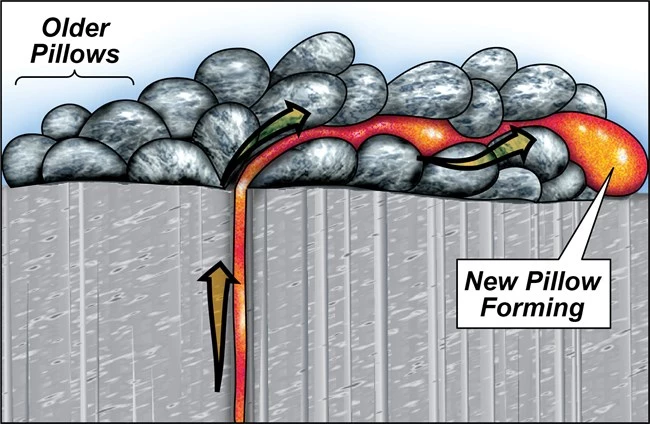
Graphic by Robert J. Lillie. Modified from “Earth: Portrait of a Planet", by S. Marshak, 2001, W. W. Norton & Comp., New York.
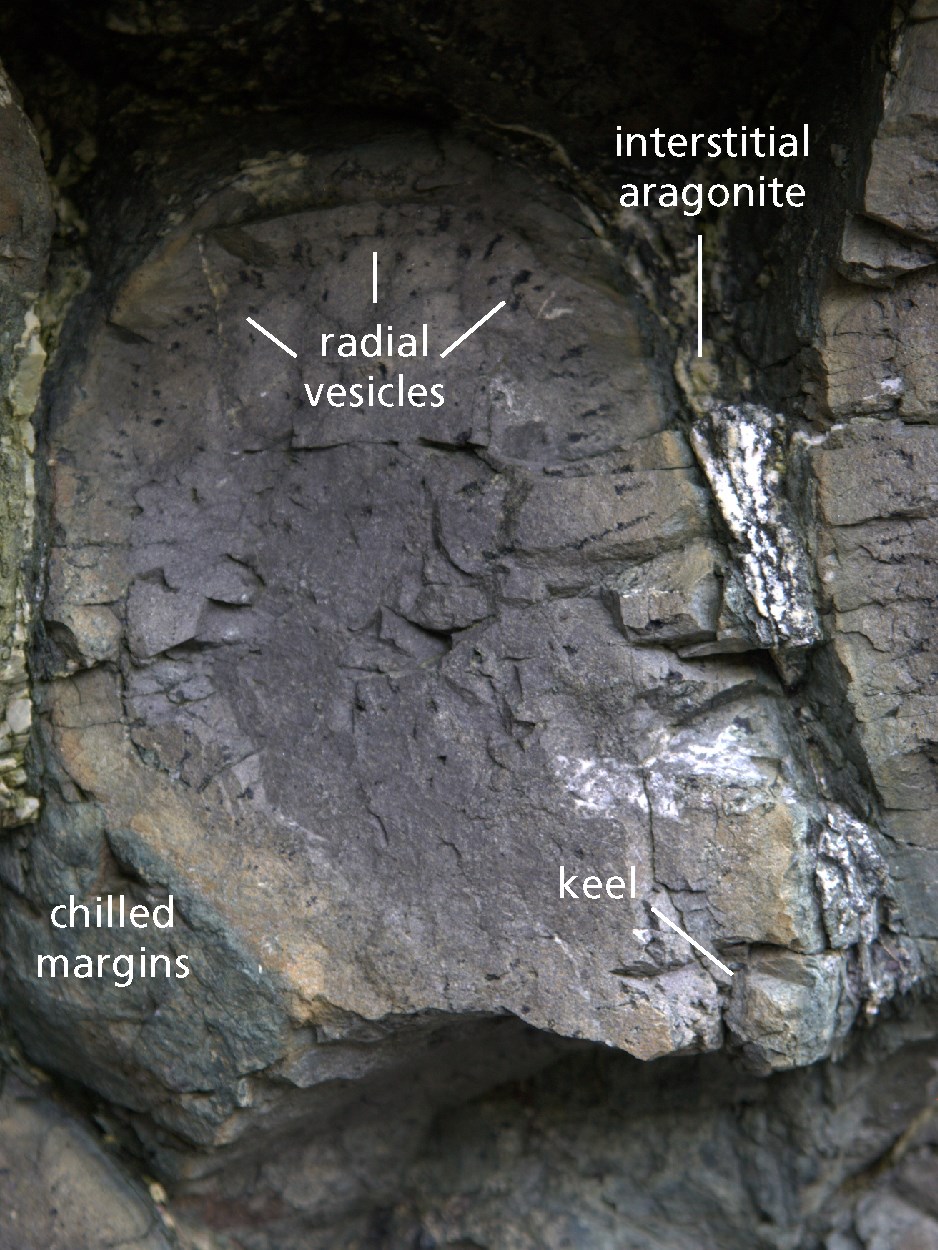
NPS photo by Chad Hults.
National Parks Pillow Basalts
Denali National Park, Alaska
Pillow basalts are present in volcanic rocks that were accreted to the continent to become part of North America. The eruptions that formed these pillow basalts occurred approximately 200 million years ago.
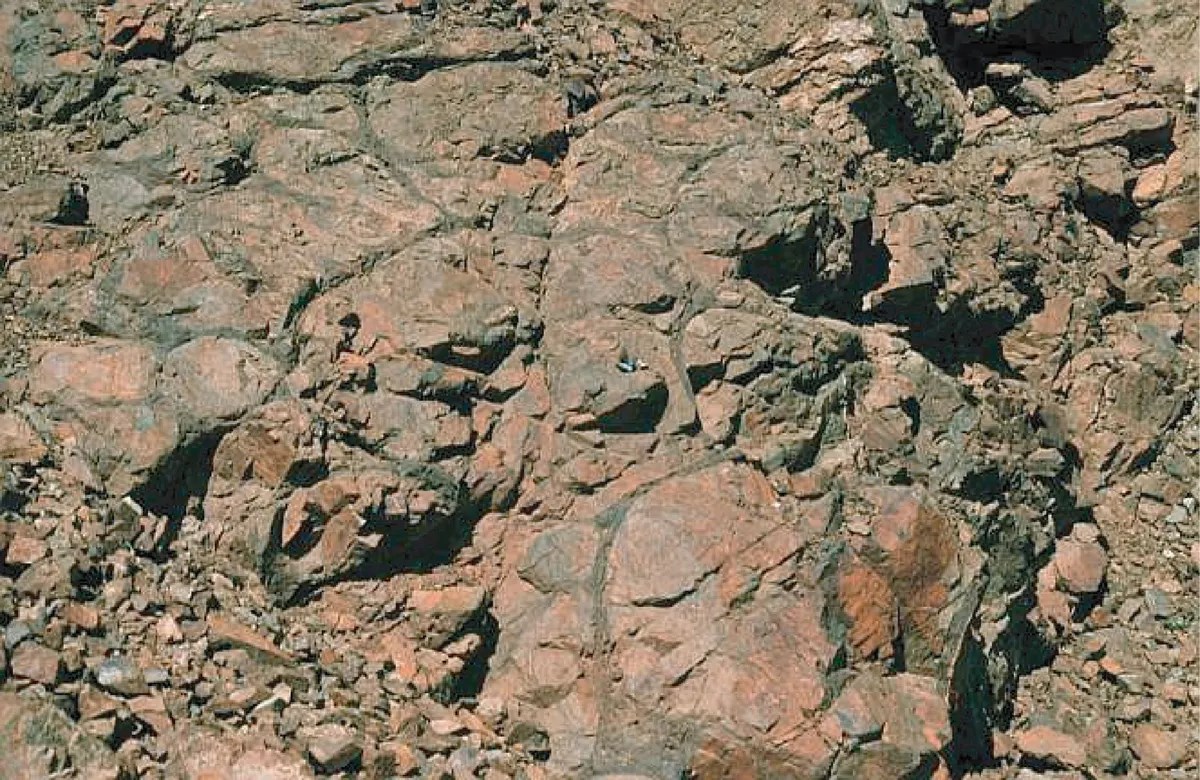
NPS photo.
Golden Gate National Recreation Area, California
Pillow basalts are present in the Franciscan Complex in Golden Gate National Recreation Area. The basalt here has been changed into greenstone by low grade metamorphism. The subaqueous eruptions that formed these pillows occurred about 190 million years ago.
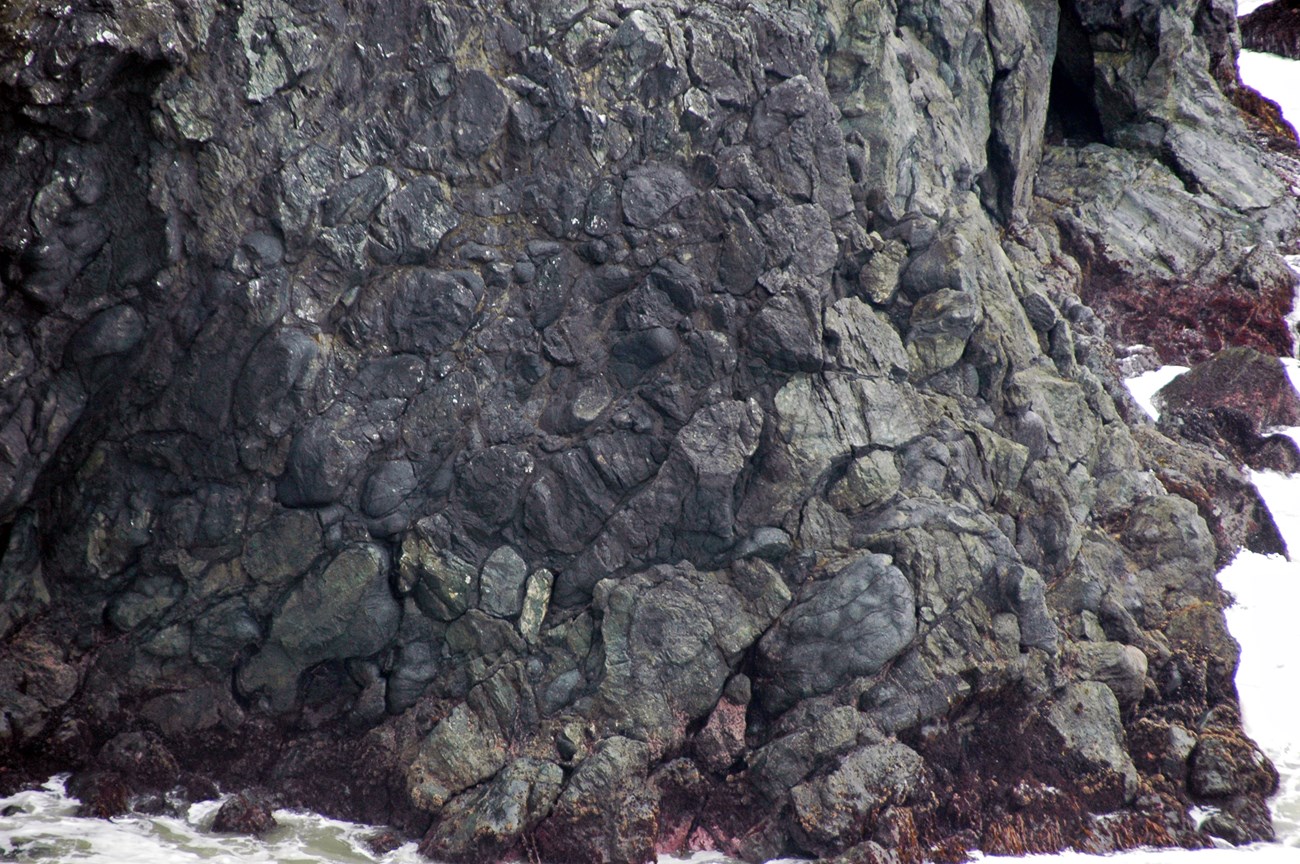
John St. James photo.
Related links
Kenai Fjords National Park, Alaska
Pillow basalts are present near the top of the Resurrection ophiolite in Kenai Fjords National Park. These pillow basalts were formed 57-58 million years ago in a subaqueous environment above a subduction zone and then accreted onto the North American continent.
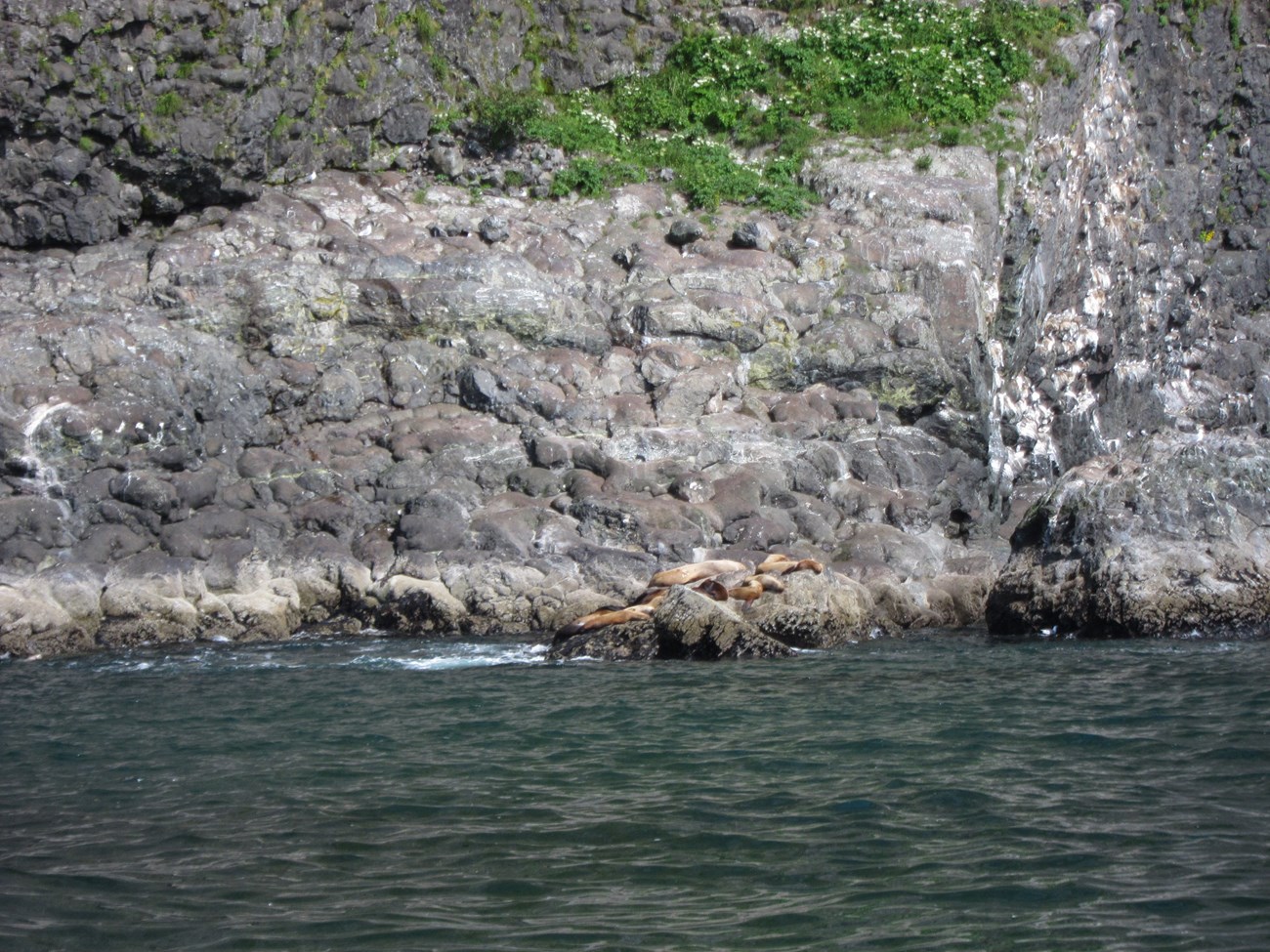
Photo courtesy of Cameron Davidson.
Olympic National Park, Washington
Pillow basalts that formed between about 40 and 50 million years ago are found in Olympic National Park. Pillow basalts in the Crescent Formation are found on the east and north sides of the Olympic Mountains.
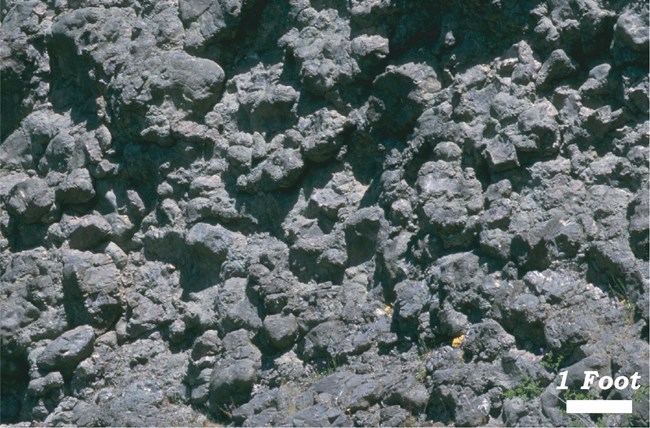
Photo courtesy of Robert J. Lillie.
Related link
Petrified Forest National Park, Arizona
Pillow basalts are found in the Bidahochi Formation in Petrified Forest National Park. The Bidahochi Formation contains lava flows, tuffs, and sediments that were deposited in a basin that sometimes contained a shallow lake. The Hopi Buttes Volcanic Field, which is mostly north of the park, is one of the most extensive maar-diatreme fields on the planet.
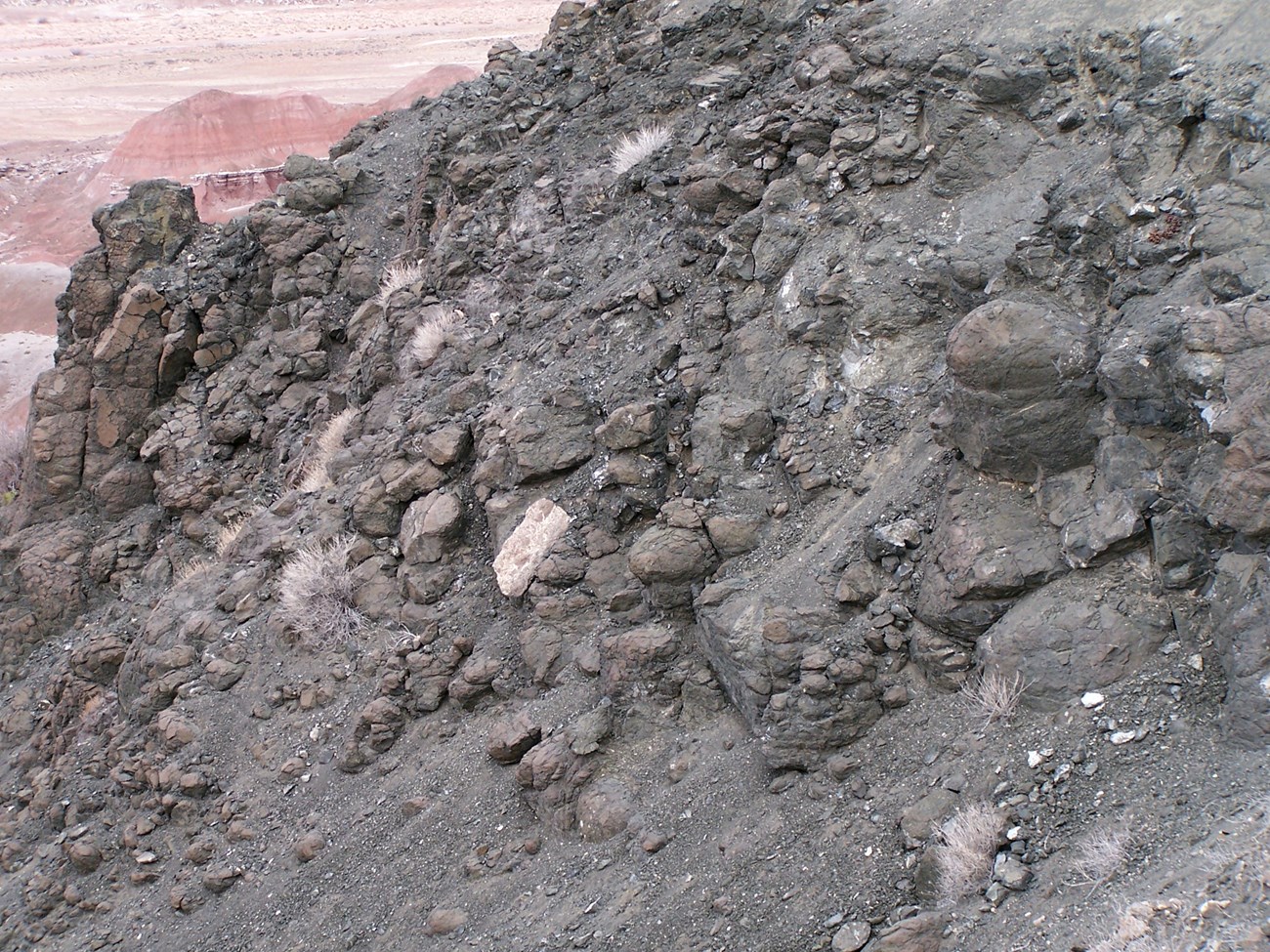
NPS photo.
Yukon-Charley Rivers National Preserve, Alaska
The Devonian Woodchopper Volcanics which is exposed along the bank of the Yukon River is well-known for its spectacular pillow basalts.
National Parks With Pillow Basalts
-
Channel Islands National Park (CHIS), California—[CHIS Geodiversity Atlas] [CHIS Park Home] [CHIS npshistory.com]
-
Crater Lake National Park (CRLA), Oregon—[CRLA Geodiversity Atlas] [CRLA Park Home] [CRLA npshistory.com]
-
Denali National Park and Preserve (DENA), Alaska—[DENA Geodiversity Atlas] [DENA park Home] [DENA npshistory.com]
-
Golden Gate National Recreation Area (GOGA), California—[GOGA Geodiversity Atlas] [GOGA Park Home] [GOGA npshistory.com]
-
Grand Canyon National Park (GRCA), Arizona—[GRCA Geodiversity Atlas] [GRCA Park Home] [GRCA npshistory.com]
-
Grand Canyon-Parashant National Monument (PARA), Arizona—[PARA Geodiversity Atlas] [PARA Park Home] [PARA npshistory.com]
-
Hawai’i Volcanoes National Park (HAVO), Hawai’i—[HAVO Geodiversity Atlas] [HAVO Park Home] [HAVO npshistory.com]
-
Kenai Fjords National Park (KEFJ), Alaska—[KEFJ Geodiversity Atlas] [KEFJ Park Home] [KEFJ npshistory.com]
-
Lake Roosevelt National Recreation Area (LARO), Washington—[LARO Geodiversity Atlas] [LARO Park Home] [LARO npshistory.com]
-
Lava Beds National Monument (LABE), California—[LABE Geodiversity Atlas] [LABE Park Home] [LABE npshistory.com]
-
Lewis and Clark National Historical Park (LEWI), Oregon and Washington—[Volcanoes of the Lewis & Clark Trail]
-
Olympic National Park (OLYM), Washington—[OLYM Geodiversity Atlas] [OLYM Park Home] [OLYM npshistory.com]
-
Petrified Forest National Park (PEFO), Arizona—[PEFO Geodiversity Atlas] [PEFO Park Home] [PEFO npshistory.com]
-
Santa Monica Mountains National Recreation Area (SAMO), California—[SAMO Geodiversity Atlas] [SAMO Park Home] [SAMO npshistory.com]
-
Voyageurs National Park (VOYA), Minnesota—[VOYA Geodiversity Atlas] [VOYA Park Home] [VOYA npshistory.com]
-
Yukon-Charley Rivers National Preserve (YUCH), Alaska—[YUCH Geodiversity Atlas] [YUCH Park Home] [YUCH npshistory.com]
Tags
- channel islands national park
- crater lake national park
- denali national park & preserve
- golden gate national recreation area
- grand canyon national park
- grand canyon-parashant national monument
- hawaiʻi volcanoes national park
- kenai fjords national park
- lake roosevelt national recreation area
- lava beds national monument
- lewis and clark national historical park
- olympic national park
- petrified forest national park
- santa monica mountains national recreation area
- voyageurs national park
- yukon - charley rivers national preserve
- pillow basalt
- volcanoes
- geology
